SwiftSHRED ECM Series, Part III
Workflow
We’ve covered what ECM is and the data continuum. We’ve gone over the immediate and quantifiable changes associated with Imaging. Now it’s time to tackle Workflow.
“Now the real game begins.”
-The Riddler, Batman Forever
Don’t worry. Workflow is not a new concept. Henry Ford’s famous assembly line is an example of workflow. One modern example of workflow is an online repository, like GitHub, where web developers can work on different phases of a project. The project can be tracked and monitored and tasks can be assigned to those who are best suited for them. Another modern and more accessible example is a fast food drive through. You have one person on the headset taking the orders, ringing them up and plugging them into the computer that sends it to the people in the back. There’s someone on fries, there’s somebody else whipping up the burgers and another person on drinks who hands you the food. There’s also a manager onsite overseeing everything to make sure everything goes smoothly. Your fast food is only fast because of the efficient workflow set up by the franchise.
What is Workflow?
Examples of workflow are everywhere. Workflow is the optimizing of high value workers so they can concentrate on high value tasks1. Going back to the drive through, the person working the register and the person working the fries both have important roles in the operations of the restaurant, but the person who’s taking the orders on the headset has a much more specialized skillset. He can interact with customers and work the register. The person on the headset must also be able to make change for one person while taking orders from the next. He has to be able to concentrate and multitask for hours because a slip up slows everyone else down. It would be a waste to have a talented high-value worker focusing only on the fries because it is a much simpler task.
How are burgers related to Enterprise Content Management?
“Mmm… Burger.”
-Homer Simpson
The fast food analogy is only meant to get you thinking about the systematic break down of tasks into sequential units as a productive operational process. That’s the essence of workflow and that’s how it is used in ECM. One of the most common ways workflow is seen in ECM is by establishing different admin accessibility for different users. Say you’ve digitized all your information and destroyed the physical documentation. You know that you can access and search all these scanned files using OCR technology. It’s all right there at your fingertips… but you might not want everyone to have access to all that data, just like the fast food manager doesn’t necessarily want the French fry guy working the register. If you are implementing an ECM system in a hospital, for instance, you may not want the Doctors to have access to employee health records (even though they are medical professionals), but you probably do want them to be accessible for certain members of Human Resources. There are any number of examples of role-based limited access that you want in place. In organizations, you want people to focus on the roles they are suited for and limit the opportunities for misbehavior.
These different roles can be established through a variety software, but the key is to find one that is easy to use and can be integrated with your current systems as seamlessly as possible. Workflow solutions enable work to be shared between workers easily and allow duties to be routed to the appropriate personnel.
Much like the assembly line we mentioned at the beginning, the purpose of an effective ECM workflow is to automate processes as much as possible. If you’ve ever applied for a job at a large company, the first step is often to fill out its online application, which is an online form. When we fill out these fields we are sending structured information to a database that is one piece of its larger ECM software system. There are likely minimum requirements for the position e.g. college degree, five years’ experience, etc. If any of the minimum requirements are not met your application will be sent to sit in a database on file and will most likely never actually be reviewed by the human hiring agent. If you do meet the requirements, then it will automatically be sent to the hiring agent for review. Enterprise Content Management workflow applications not only manage all the content an organization produces, they also manage all the content an organization receives.
“The idea is unnatural naturalness, or natural unnaturalness…”
-Bruce Lee
All of this is meant to alleviate manual processes, save time and money and improve security2. The whole purpose of workflow in ECM is to allow specialized people to spend more time doing productive work and less time on organizational and retrieval chores. Individuals in organizations often debate whether or not these workflow systems help. Some see them as cumbersome and restrictive, and others see them as great tools.
So, which is it?
An individual’s stance on this may vary depending on one’s skillset, personality, tendencies and temperament. These workflow systems are a part of professional life and will only become more vital to operations as time goes on, so, if you’re unable to adapt or adopt them, you’ll be left behind, BUT, if you rely on them too heavily, you might be limited in your career because one firm’s ECM system can be totally different from the next. Let’s finish up with our friend from the French fry station. Just because he shouldn’t be working the register doesn’t mean he’s not a valuable asset to the fast food operation. He may bring a positive attitude or a willingness to work which is intangible but does have a productive effect. In sports these are called locker room guys. Until an organization’s system is entirely automated through workflow, these locker room guys will still be needed.
Keep an eye out for our next installment in the Enterprise Content Management series, where we’ll focus on Records Management.
- Workflow Management: The Hidden Gem of Enterprose Content Management, McCorpin, 2018 ↵
- Richo USA, 2018 ↵


